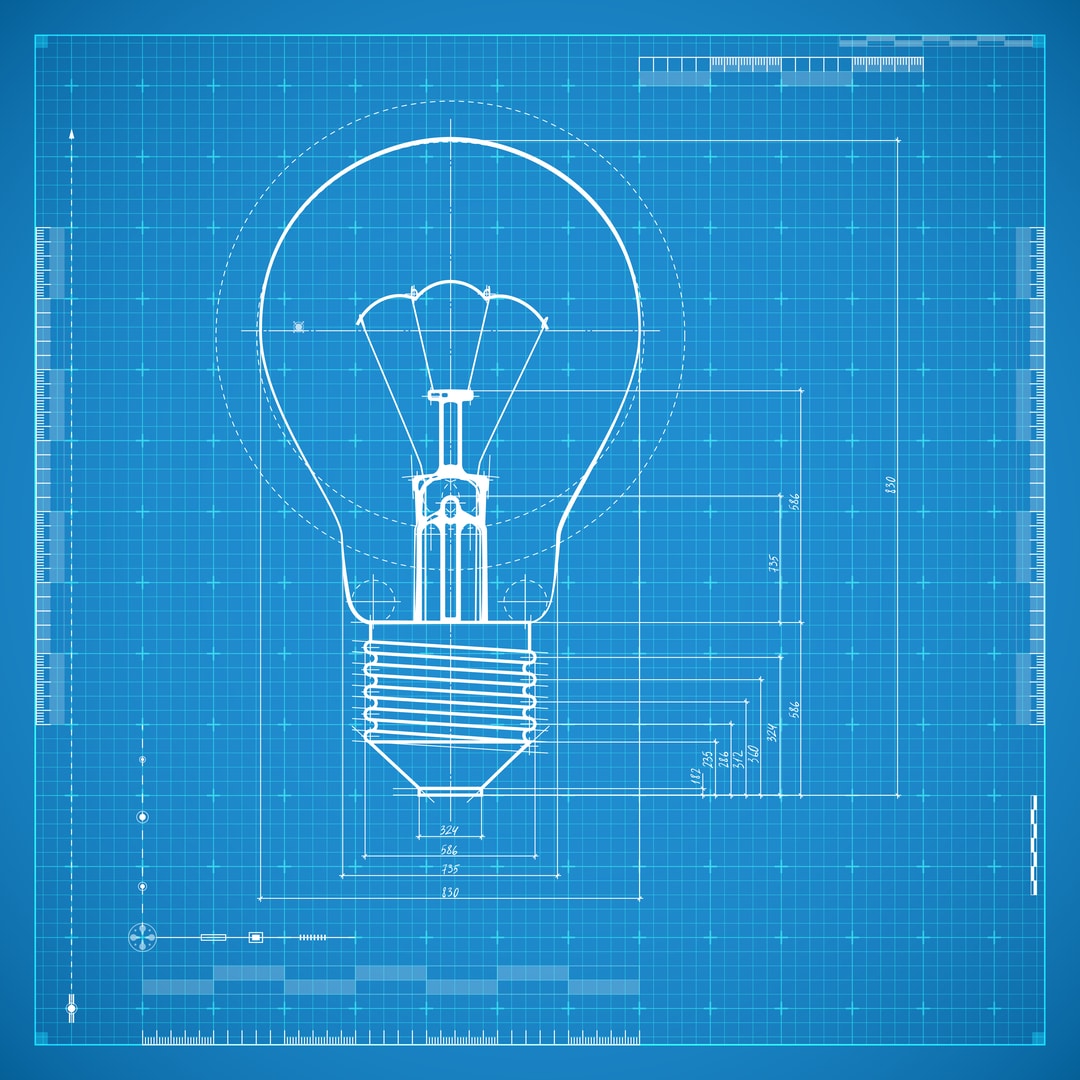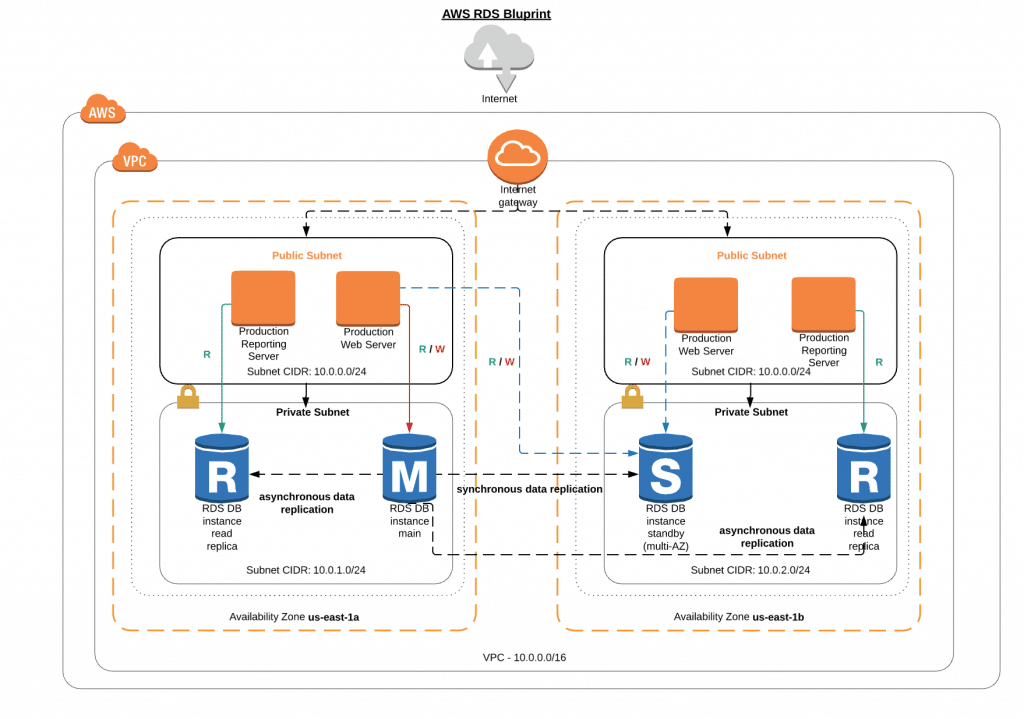Amazon RDS is a managed relational database service that provides multiple familiar database engines to choose from (Amazon Aurora, MySQL, MariaDB, Oracle, Microsoft SQL Server, and PostgreSQL). Amazon RDS handles routine database tasks such as provisioning, patching, backup, recovery, failure detection, and repair.
Compared to the hosted databases, RDS is easy to use and the admin effort is very low. Increasing the performance and storage is easy. Monitoring, daily backups and restores can be configured easily.
Existing hosted databases can easily be migrated to AWS using AWS Migration Service. This service supports homogeneous migrations such as Oracle to Oracle, as well as heterogeneous migrations between different database platforms, such as Oracle to Amazon Aurora or Microsoft SQL Server to MySQL.
RDS Configuration
Above architecture diagram, shows a proposed AWS Architecture for an Enterprise Web Applications.
VPC
AWS recommends having your application inside a VPC (Virtual Private Cloud). For a multi-tiered web application, it is recommended to have a private and public subnet within the VPC. The database server should be launched in the private subnet, so that it is isolated and secure. The webservers should be launched in the public subnet. Security and routing needs to be configured so that only the web servers can communicate with the database servers in the private subnet. Since the web application is public facing, there would be an internet route configured for the public subnet.
Multi-AZ Deployment
AWS RDS allows multi-AZ deployment to support high availability and reliability. With this feature, AWS automatically provisions and maintains a synchronous standby replica in a different Availability Zone. AWS synchronously replicates the data from the primary to the secondary database instance. If the primary database instance goes down for any reason AWS will automatically fail over to the secondary database instance.
Read Replicas
Read Replicas, can help you scale out beyond the capacity of a single database deployment for read-heavy database workloads. Updates made to the source DB instance are asynchronously copied to the Read Replica. This mechanism would be very useful in case you have a web application and reporting application both using the same database instance. In this scenario, all read only traffic would be routed to the read replicas. The primary database would be used for read and write traffic for the web application.
Backup and Maintenance
AWS automatically creates backups of the RDS instance. Amazon RDS creates a storage volume snapshot of your DB instance, backing up the entire DB instance. To reduce performance impact, backups and maintenance should be configured when application usage is low.





